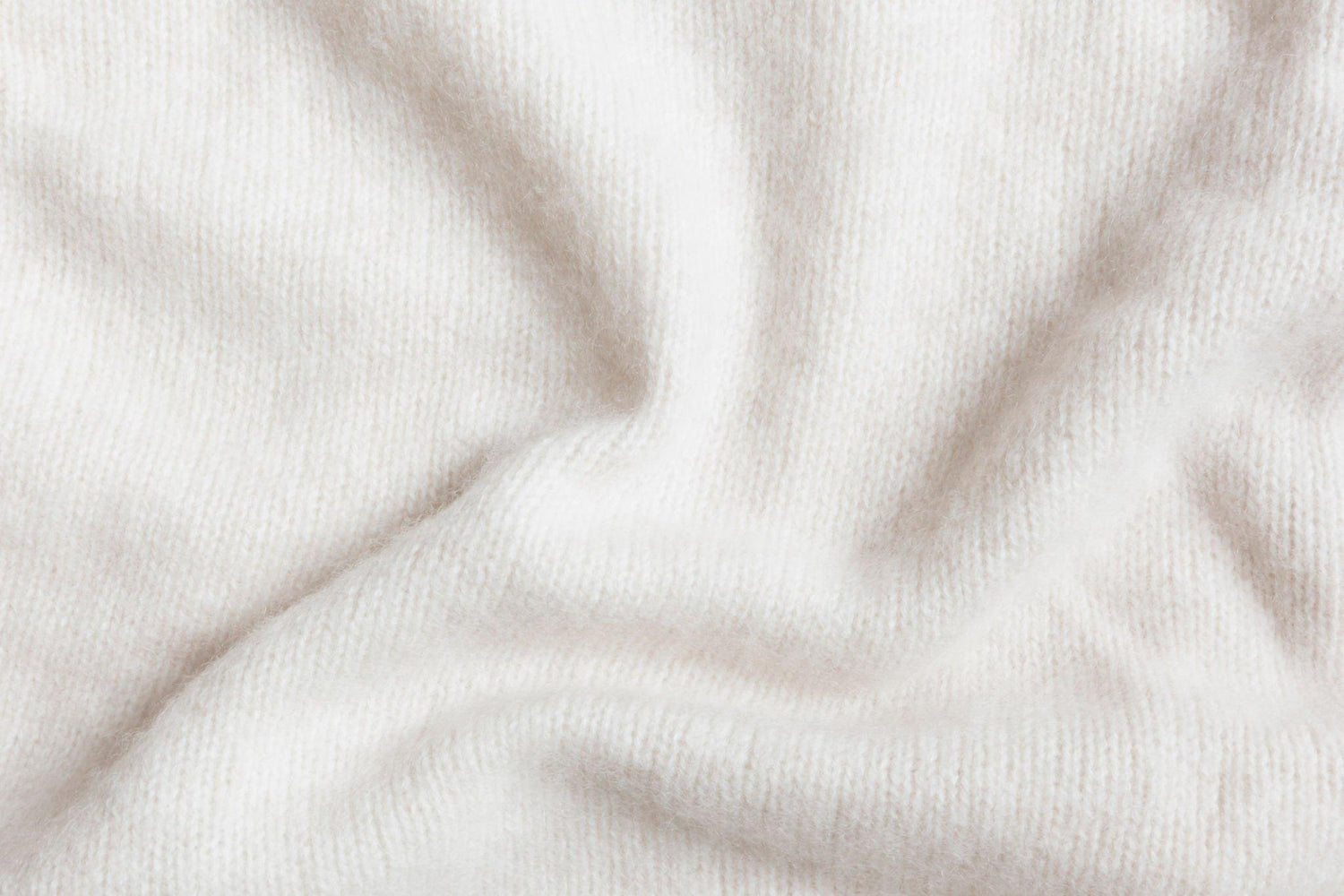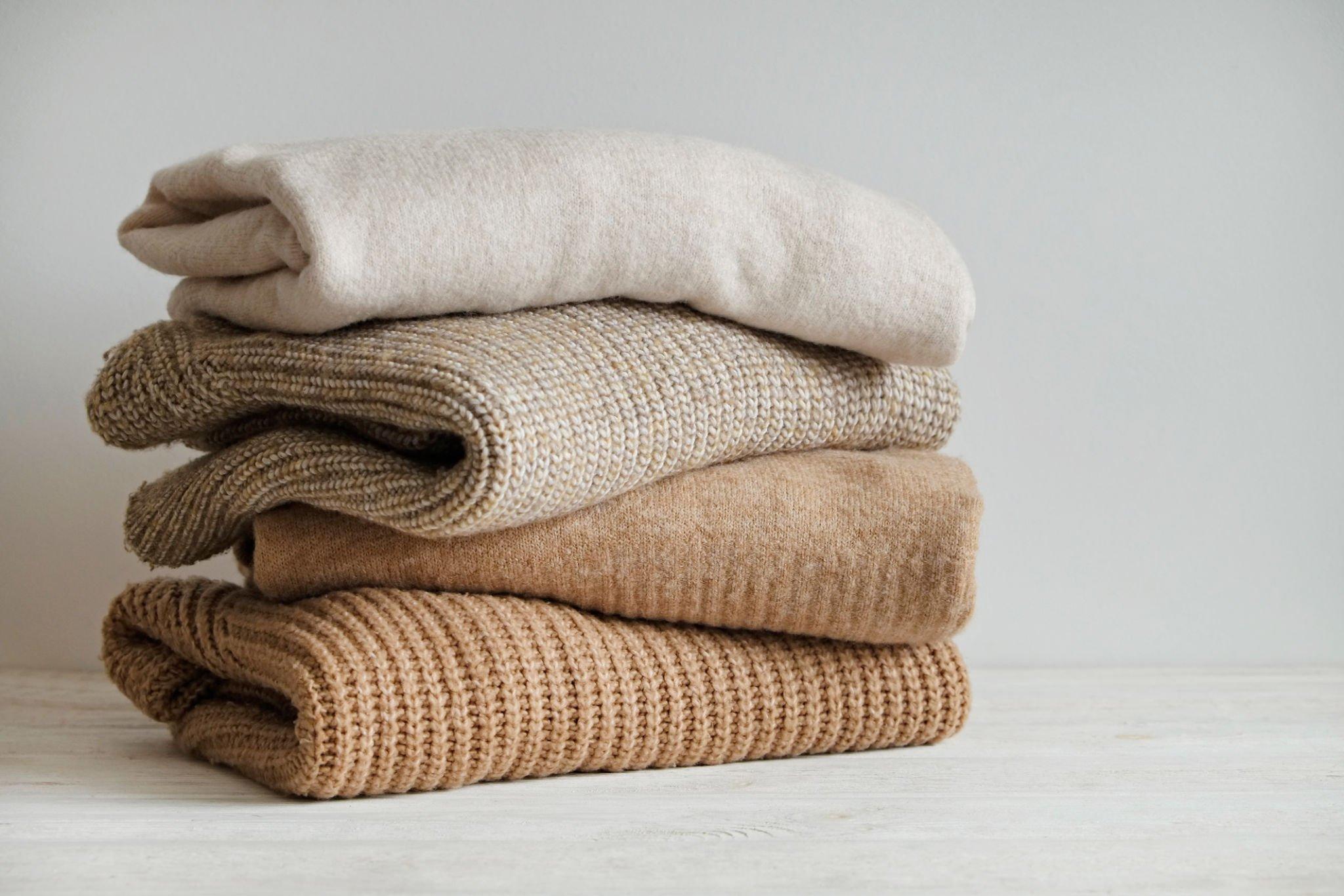Oops! Have you stained your favorite cashmere shawl or spilled a little wine down the front of your new cashmere sweater? We've all been there and know the stress that comes with a bright, fresh stain on a precious piece of clothing.
You may be wondering if you'll ever be able to restore your cashmere once you stain it. The good news is that yes, you can! With some care, you can save the fabric from being ruined with unsightly stains.
In this simple guide, we'll teach you how to remove stains from cashmere and how to care for your apparels to keep them looking as fantastic as the day you bought them.
Common Types of Stains
Whether you've had a food mishap or found a stain on your cashmere sweater after taking them off, seeing a smudge on your favorite cashmere can cause you to break into a cold sweat. Stains are an unavoidable part of life.
Before you start panicking, it's important to figure out where the stain has come from in the first place. This will help you treat the stain properly before washing your cashmere clothing and will leave them looking as good as new.
Usually, you'll find that there are several common sources of these stains, including:
Sweat
Sweat stains are perhaps the most common type of stains you'll find on your clothing, whether they're made from cotton or cashmere. These stains are generally a result of perspiration (sweating) or residue from deodorants and can cause white or yellow stains in the armpit area of your cashmere garments.
If you don't act quickly with these stains, they can start to yellow even further and can even cause odors to stick to your clothes.
Makeup
Sometimes, makeup can transfer onto your clothing. Foundation, lipstick, and powder products are normally the culprits of these nasty stains and can cause a lot of worry and frustration.
This is particularly true when you've been wearing red lipstick or if your foundation leaves beige or brown streaks on the fibers of your cashmere sweaters!
Since most makeup products contain certain pigments and oils, treating your cashmere garment as soon as possible is essential for keeping your clothes in tip-top shape.
Tannins
If you're a wine drinker, you've probably heard of tannins. But did you know that other food products and beverages contain tannins, too? Some examples of this include coffee, tea, and fruits like strawberries and blueberries.
We've all had food and drink spills, which doesn't feel like the end of the world. Unless you're wearing cashmere clothes, that is. Tannins can bind to the natural wool fibers of cashmere pretty quickly, so it's important to make sure that you treat these stains as quickly as you can.
Dyes
Dye stains can come from several sources like synthetic dyes, inks, or even from plant pigments like grass stains.
Usually, you'll find these types of stains if you wash your cashmere clothing with other items of clothing that use synthetic dyes. When you wash cashmere clothing in the machine with other garments, these dyes can bleed and seep into the fibers of your cashmere clothes.
Naturally, separating white or light-colored clothes and colors can help to avoid these little accidents. Still, there are some cases where this is unavoidable. Luckily, if you notice these color bleeds as soon as they happen, there is still some hope for restoring your cashmere garments.
Oils
Besides the dreaded wine stain, oil-based stains come in as a close second as one of the worst stains to deal with. Since oil and water don't mix well, it can be tricky to remove these stains and get rid of any traces of them that may cling to the natural fibers of your cashmere garments.
Although oil-based stains usually require hot water to liquefy the grease, it's really important to remember that hot water and cashmere garments just don't mix. Instead, cold water and a high-quality cashmere wash are always best - even when you're dealing with oil!
Proteins
Protein stains can be challenging to tackle since they can come from a range of sources. These stains are usually a result of animal-based products like meat, eggs, and dairy. However, they can also come from bodily fluids like urine or blood.
So, if you have a mischievous pet that tends to tinkle on clothes that are left on the floor or you've come into contact with certain products when you're cooking, it's likely that the stains on your cashmere are caused by proteins.
Combination stains
In some cases, you may be dealing with a combination stain. These stains come from products that have a combination of ingredients that can cause more than one stain type. For example, some makeup products can cause oil-based stains and dye stains from the pigments used in your go-to lipsticks.
Pre-Treating the Stains on Cashmere
When it comes to removing stains from cashmere, it's essential to start by pre-treating the stain. This makes it a lot easier to wash out the stains in one go rather than treating the same stain over and over again.
The stain removal process for cashmere is more meticulous than for standard fabrics, which means you'll need to take extra care of the soft fibers. It also means that normal stain removal techniques aren't going to work as well and may also damage your cashmere garments.
For items that are lined or can't be hand or machine-washed, you're going to want to spot-treat the stain rather than pre-treat it. You can do this by using stain removers that are specially formulated for wool fibers and dabbing these treatments onto the stain. Be careful to avoid rubbing, though! You can then use cold water on a clean, damp, and lint-free cloth to rinse the solution away.
On other cashmere items like blankets, sweaters, or shawls, you can use the same stain remover. However, this time, you can use it as intended. Some products may suggest soaking your cashmere garment in the solution before washing, while others may need to be applied and left to soak in before washing.
Just be sure to test the stain remover on a small (and inconspicuous) part of the item before using it on larger stains, since they may have a bleaching effect on colored cashmere.
Once you're sure that the product is safe, you can apply it to the stain, being sure to follow the manufacturer's instructions carefully.
After rinsing out the solution (if necessary), it's time to move on to the washing stage.
Hand Washing
Getting rid of cashmere clothing stains takes time and a whole lot of patience! There are still a few steps left in the stain removal process, of which the washing step is perhaps the most important.
One of the best tips to keep in mind is to hand wash your cashmere rather than tossing your item into the washing machine. When you're washing cashmere by hand, you've got full control over how the garment is treated and you can ensure that the integrity of the wool fibers stays intact.
Another crucial thing to remember is to always use cold water to wash cashmere. Hot or warm water can damage the fibers or cause shrinkage, which is the last thing you want.
To remove stains from cashmere by hand washing your items, you can follow these easy steps for a stress-free process:
- Fill a sink with cold water and add a high-quality cashmere wash (we highly recommend the Wool & Cashmere Shampoo).
- Place your cashmere garment into the water and ensure it's fully submerged.
- Use your hands to move the water around until the shampoo starts to create suds. This will cover the entire garment or item with the shampoo, which will make it more effective.
- If necessary, gently massage the shampoo into the stain to help loosen it. Be careful with this step, though, and avoid rubbing the fabric together or using other tools to scrub it. Rather, use your fingers to rub over the stain.
- To help you feel absolutely certain that the stain is gone, you can leave your cashmere item to soak in the soapy water. You may want to set a timer for this step since you don't want to leave it soaking for too long. Around 30 minutes or less should do the trick.
- Remove the item from the water and run cold water through it to rinse out all of the shampoo. Keep running the water through until there isn't any soap left.
- One thing you don't want to do is wring out cashmere. Instead, place the item on a flat surface and press out any excess water.
Drying
To keep the shape of your cashmere, you can lay it on a flat surface with a towel beneath it or onto a drying rack. Either way, it should be flat and shouldn't hang down anywhere. The weight of the water in the fabric can cause stretching, which is why it needs to stay level.
If there is still a lot of excess water in the fabric, you can place another towel on top of the item and roll it up. Then, press down gently to squeeze the water out and return it to its original position, keeping it leveled.
Top tip: Don't leave your item to dry in direct sunlight, since this can cause sun bleaching and other damage to the fibers. Rather, lay it flat in a room with good natural airflow and leave it in place until it is completely dry.
Storing
Forget what you've read about storing delicate fabrics! Plastic bags and storage bins aren't always the best option for your clothing, especially when it comes to cashmere.
Storing cashmere items actually couldn't be easier. All you need to do is ensure that it is clean and dry before you pack it away. Otherwise, you can attract pests like bugs that can damage the fabric.
For jackets and other structured items, you'll want to hang these items on a sturdy wooden hanger. Other items can be folded neatly (after they have been steamed to remove wrinkles or creases) and packed away into your wardrobe.
How to Treat Stubborn Stains on Cashmere?
Sometimes, no matter how hard you try, there are some stains that just won't budge. Although this can be frustrating (and cause a lot of panic), you don't need to give up on your cashmere item just yet. There are still two more solutions that you can try.
The first solution is to repeat the stain-removal process. Some stubborn stains may take two or three treatments or washes to completely rid them of any lingering dirt or pigments. You'll also want to leave the garments to dry completely since there are certain stains that will lighten once the items dry.
If this still doesn't work, it may be time to take your items to the dry cleaners. Professional dry cleaners may have better luck at removing stains with specialized treatments and equipment.
Conclusion
Although having a stain on your gorgeous cashmere items can leave you feeling worried, knowing how to treat these stains can help put your mind at ease.
With these expert tips and a high-quality cashmere wash that is specially formulated for gentle fabrics, you can easily remove stains from your cashmere sweater. It will be as if it never happened!
FAQs
Is it safe to use bleach on cashmere to remove stains?
Bleach should never be used on cashmere items. This chemical is too harsh for such a delicate fabric and can cause lasting damage to your items. Instead, you'll want to use products that are designed for treating cashmere.
How should I handle piling while removing stains from cashmere?
If you've accidentally rubbed your cashmere item a little too much during the washing process, it may cause piling. However, this can easily be remedied with a fabric shaver or cashmere comb.


